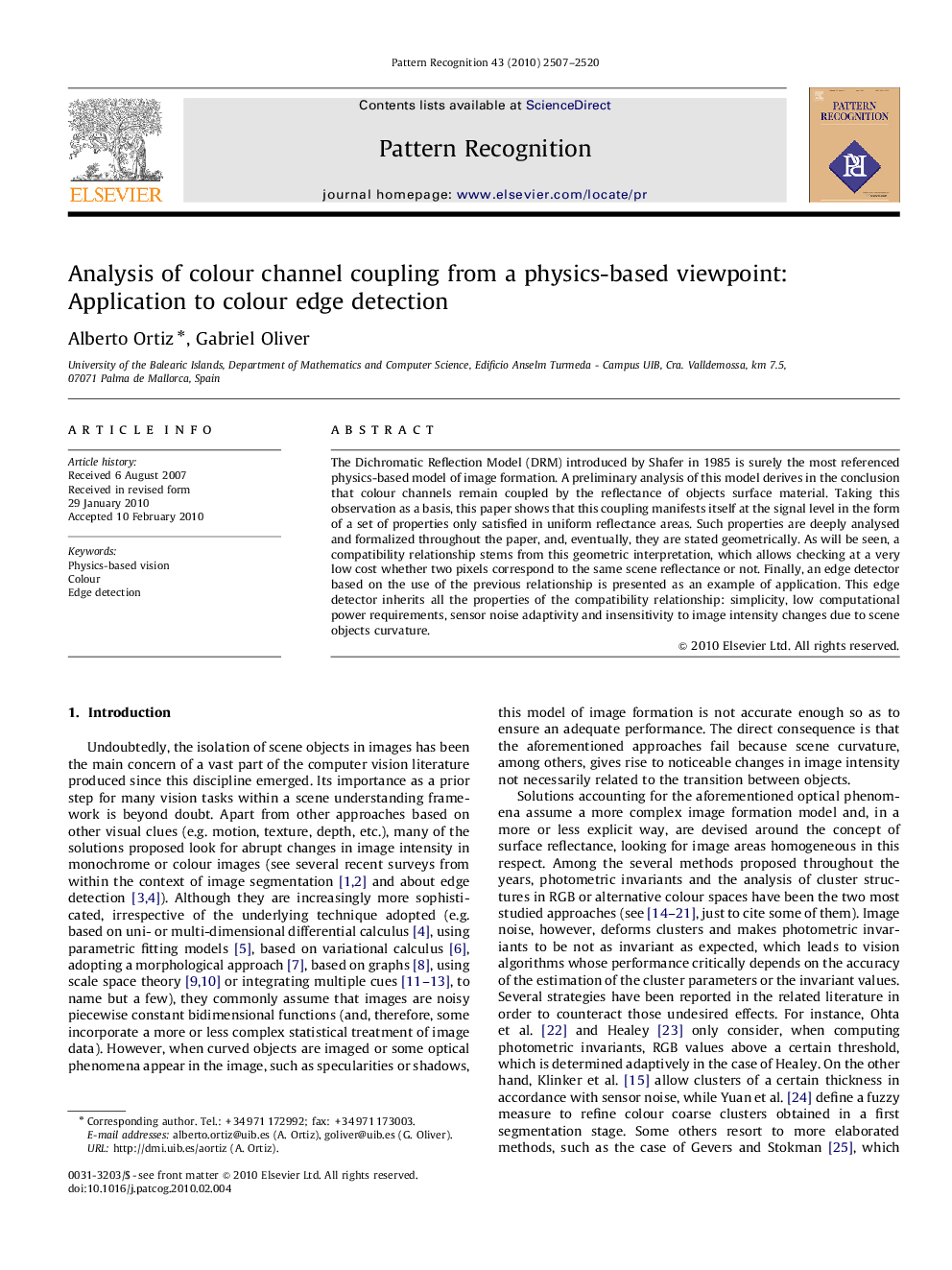| Article ID | Journal | Published Year | Pages | File Type |
|---|---|---|---|---|
| 531121 | Pattern Recognition | 2010 | 14 Pages |
The Dichromatic Reflection Model (DRM) introduced by Shafer in 1985 is surely the most referenced physics-based model of image formation. A preliminary analysis of this model derives in the conclusion that colour channels remain coupled by the reflectance of objects surface material. Taking this observation as a basis, this paper shows that this coupling manifests itself at the signal level in the form of a set of properties only satisfied in uniform reflectance areas. Such properties are deeply analysed and formalized throughout the paper, and, eventually, they are stated geometrically. As will be seen, a compatibility relationship stems from this geometric interpretation, which allows checking at a very low cost whether two pixels correspond to the same scene reflectance or not. Finally, an edge detector based on the use of the previous relationship is presented as an example of application. This edge detector inherits all the properties of the compatibility relationship: simplicity, low computational power requirements, sensor noise adaptivity and insensitivity to image intensity changes due to scene objects curvature.
